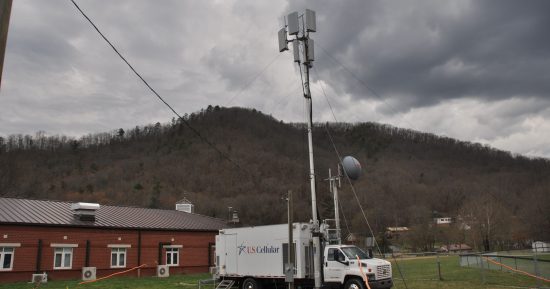Building broadband takes time. There’s permitting, environmental reviews, engineering, negotiations with city officials and pole owners, and other considerations.
That said, temporary wireless broadband systems can be set up quickly, sometimes in days and weeks, not months or years like wireline networks. Setting up outdoor WiFi, as some schools have done (HT Billy Easley II), is a good step but WiFi has its limits and more can be done.
The FCC has done a great job freeing up more spectrum on a temporary basis for the COVID-19 crisis, like allowing carriers to use Dish’s unused cellular spectrum. Wireless systems need more than spectrum, however. Operators need real estate, electricity, backhaul, and permission. This is where cities, counties, and states can help.
Waive or simplify permitting
States, counties, and cities should consider waiving or simplifying their permitting for temporary wireless systems, particularly in rural or low-income areas where adoption lags.
Cellular providers set up Distributed Antenna Systems (DAS) and Cells on Wheels (COWs) for events like football games, parades, festivals, and emergency response after hurricanes. These provide good coverage and capacity in a pinch.
There are other ad hoc wireless systems that can be set up quickly in local areas, like WISP transmitters, cellular or WISP backhaul, outdoor WiFi, and mesh networks.

Allow rent-free access to municipal property
Public agencies own real estate and buildings that would lend themselves to temporary wireless facilities. Not only do they have power, taller public buildings and water towers allow wireless systems to have greater coverage. Cities should consider leasing out temporary space rent free for the duration of the crisis.
Many cities and counties also have a dark fiber and lit fiber networks that serve public facilities like police, fire, and hospitals. If there’s available capacity, state and local public agencies should consider providing cheap or free access to the municipal fiber network.
Now, these temporary measures won’t work miracles. Operators are looking at months of cash constraints and probably don’t have many field technicians available. But the temporary waiver of permitting and the easy access to public property could provide quick, needed broadband capacity in rural and hard-to-reach areas.

 The Technology Liberation Front is the tech policy blog dedicated to keeping politicians' hands off the 'net and everything else related to technology.
The Technology Liberation Front is the tech policy blog dedicated to keeping politicians' hands off the 'net and everything else related to technology.